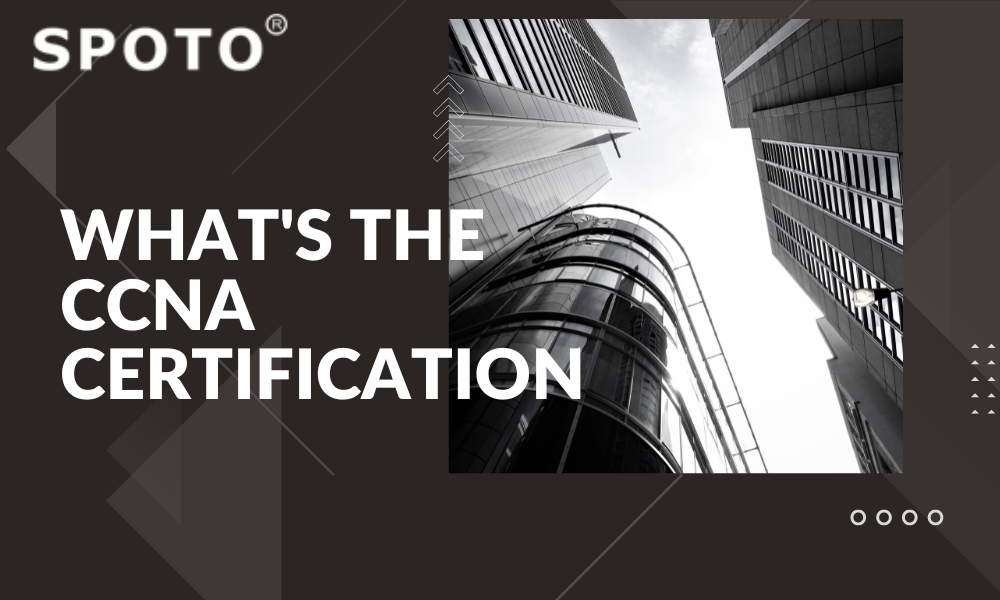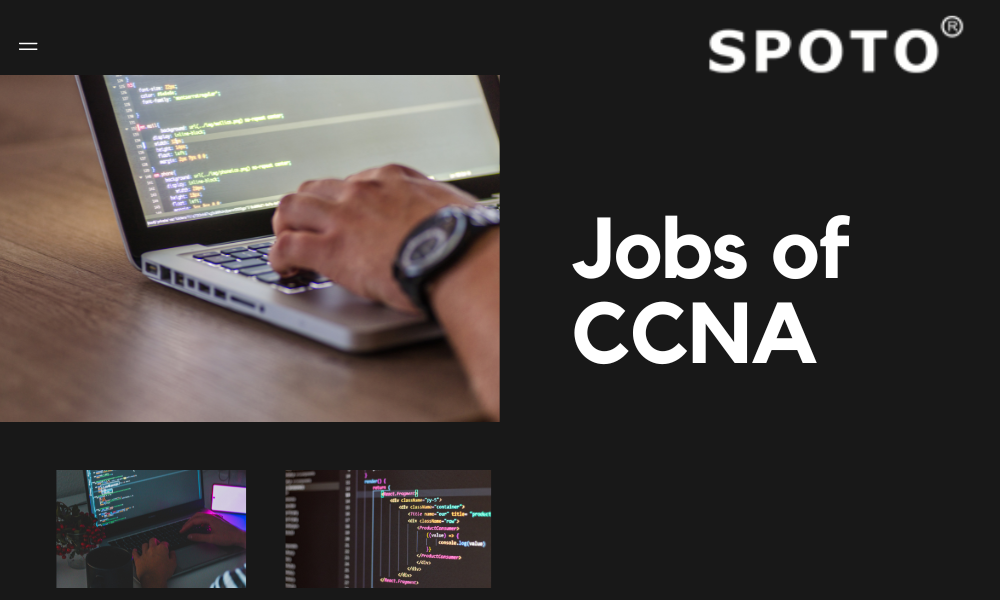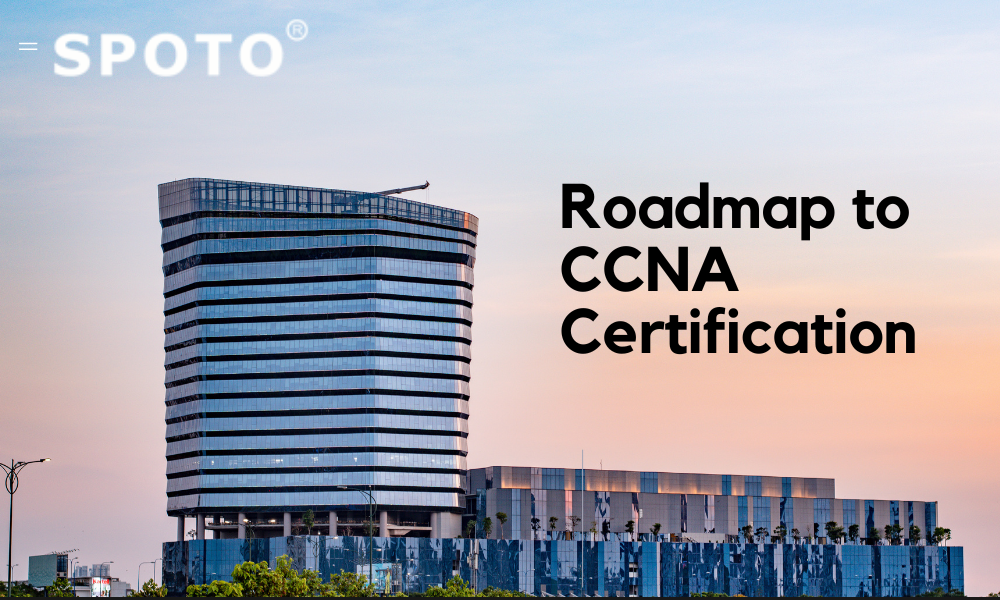
Featured Exams & Certifications in 2023
Hear how we've helped others get their certifications
Latest News

5 TIPS FOR PASSING YOUR CCNA EXAM
5 TIPS FOR PASSING YOUR CCNA EXAM Many new Cisco exams were released in June 2019 as part of the company's most comprehensive upgrade to its career certification programs (since 1993). Recertification regulations were updated and a new Cisco DevNet certification has been created. New Cisco exams were also announced. They will all be available starting February 24, 2020. The CCNA 200-301 exam, also known as Implementing and Administering Cisco Solutions, is an Associate-level exam in the 200 series. It is required for CCNP certification. Although it is not a prerequisite for the CCNA certification, it is a requirement in the revised program. Fees to the CCNA Exam The CCNA exam is $300 for each attempt in the 200- or 300-series. Recertification Fees & Pricing for the CCNA Certification You must pass the CCNA 200/301 exam to become CCNA certified. It costs $300. Recertification can be more fun if you have taken the CCNA 200-301 exam. Take the CCNA exam again for $300 You will need to pay $400 for a core exam like ENCOR. Anyone who has taken a concentration exam can receive a certificate of completion. Take any CCIE Lab exam and get $1600 Use 30+ Cisco Learning credits The new Cisco certification program format has three-year certification cycles. What can you expect from the CCNA Exam? The 200-301 CCNA exam covers access, network fundamentals, and IP connections as well as services. All aspects of security, including automation, programming ability, security fundamentals, and security fundamentals, are covered. Who should sign-up for The Cisco Solution CCNA 200-301? Anyone interested in CCNA certification should take a CCNA training class, this course will give you the underlying knowledge needed to support technicians using the Cisco network. These jobs best reflect the knowledge gained in this course. Network engineer at a lower ranking Administrator for the network Network support technician Help desk technician Cisco Cisco CCNA (200-301) Exam - Why Take It? To start your career as an IT professional, you will need to be certified by Cisco Certified Network Associate. Future generations will have access to a wide range of options. Exam Preparation for CCNA This test can be passed or failed. It all comes down to your preparation. If you have a foundation-level CCNAR&S certificate, you will be familiar with most of the exam topic areas such as routing protocols. Those with CCNP R&S or CCIE R&S may also be familiar with some of these topics. Now we're ready to begin the most important part of our journey. To get your certificate, you need to have a study plan. It is a good idea to start by reviewing your IT concepts. Next, you should practice soft skills in areas such as networking, IP principles, and services. Learn about your Cisco soft skills and get help from IT professionals who know. This study guide will make you a better candidate for the long term. Cisco CCNA (200-301) Study Guide Cisco Site These resources can be found on the Cisco website. Overview of CCNA Certification Exam (PDF File, 68 Ko) This section will cover everything you need to know about the subject. This section also shows the benefits of certification. Frequently Asked Questions (PDF format. 405 Kb). This handbook is designed to assist you on your journey. This handbook answers all of your exam-related queries. Cisco Training SPOTO Cisco Training includes lectures and tests. Learn how to configure, verify, and operate basic IPv4 and IPv6 networks. Your Best Friend A book is the best way to clarify confusion or answer questions. Stephen McQuerry CCNA Preparation Library (640-801). This book has been approved by Cisco. All of the theories, concepts, and vocabulary will be found in. Todd Lammle's Cisco Certified Network Associate Study Guide (640-802 This book is recommended often by CCNA professionals to students preparing for the CCNA exam. It also contains four practice questions written by Todd Lammle. It is also completely free. The course covers Cisco network equipment. Register to the Cisco Community It's always a good idea for someone to join an online forum, no matter where they are located. Conclusion Take a test to improve your study skills, and get ready for the real thing. If you are short on time, you can sign up for a course with SPOTO and be ready to take the exam.

Jobs of CCNA
Jobs of CCNA There have been a lot of people asking me lately if they can get a job in cyber security with just the Cisco CCNA certification. This is a good question, as the CCNA is not an easy exam and is not the first certification people seek. It doesn't matter what, however, it raises a great question: "Is the Cisco CCNA sufficient to get a job as an IT/cyber security professional?" Can you get a job as a Cisco CCNA-certified person? Employers will often hire people with the Cisco CCNA certificate for entry-level or lower-level IT jobs or cybersecurity jobs. However, your chances of getting hired are greater if you have a secondary skill such as customer service or technical experience. Let's dig a little deeper and see what our chances of finding a job are with just a Cisco Cisco CCNA certification. Also, what additional resume we can add to improve our chances of success in job searches? The CCNA Can Help You Get Jobs Cisco CCNA, also known as Cisco Certified Network Associate (or the advanced entry-level designation) is a certification that Cisco designed to show an understanding of layer 2 & layer 3 routing and switching concepts and how they relate to Cisco equipment. Cisco's CCNA certification has been in use for more than twenty years and is still very popular. Other CCNA certifications have been developed by Cisco, such as CCNA Wireless and CCNA Security. Although these certifications are comparable to associate-level credentials in Cisco's Cisco lineup, almost all people who say CCNA is referring to the CCNA Routing & Switching, which was the first and still the most popular. The CCNA will open up a variety of entry-level to mid-level career opportunities in networking. These positions include network technician, network administrator, and network engineer. These positions may be called different things at different companies. For example, a network administrator at one firm might do the same as a network technician at the other. The Cisco CCNA certifies that you are capable of working in networking-related positions such as installing routers and switches, troubleshooting, and wiring them. While most employers won't allow you to work on a network or perform more dangerous configurations such as access control lists and routing protocols with the CCNA until your abilities are proven, they might be willing to let you go to learn and help you complete more basic tasks. You can still get a job as a technical worker if you have the Cisco CCNA but no other technical experience or certifications. However, it will be more difficult. You shouldn't expect a higher salary if you have only the CCNA. However, you can still get a job if your resume includes more experience or expertise. Although the CCNA can get you in, it won't keep you there. Although the CCNA can be enough to get you hired by some companies as a networking-based job, even if your resume doesn't include any other information, it won't keep you there and will not help you move up. You can't get a job with the CCNA certification alone. Your first task should be to learn more about other skills and knowledge. You must have experience. By looking for additional projects and taking daily assessments of what you have learned, you can gain experience. If you are in a technical job, you should record at least one new skill every day. You can use any downtime to learn new skills that will improve your job performance. It could be learning about the operating systems your company uses on its network. Every day, learn something that you can add to your resume or supplement your CCNA certification. Complement Your CCNA Skills With Other Skills Soft skills are easy to document so you might consider them when building your resume around your CCNA certification. Most people have some soft skills and experience that they can add to a resume. A lot of people don't realize the value of prior experience. Did you have the opportunity to demonstrate customer service skills in a retail setting? Have you ever worked in a job that required you to work with a team or have leadership experience? Did you have a job that required you to be on the phone all day, which might have given you cold calling or sales experience? To see the skills you have, look through your work history. Make sure to document any soft skills employers would like. Combining these soft skills with the CCNA will open up doors for you. It all comes down to how you present it. Add another certification to your CCNA certificate You could also work towards another certification, which is my least favorite option. It would be a good idea to go back to school and take the CompTIA Security+. What would a Linux or Windows Server certification do for you? While certifications are beneficial in general, you should not add technical experience to your resume. The Cisco CCNP or CCNA Security are two of the most sought-after certifications if you're determined to continue your education. The CCNA Security certification is a good choice, as it allows you to enter the security side networking. It only requires one exam. Last Thoughts With the information you've read, you should be confident in your ability to get a job as a CCNA-certified professional. If you don't have a job yet you can find out how you can quickly do so. You are welcome!

Roadmap to CCNA Certification
Roadmap to CCNA Certification Cisco, a major vendor of IT network equipment is designed and produced in-house. Cisco is the most recognized IT vendor and the largest OEM in its field. Cisco products are widely used in industry and business. 1. What is the CCNA Certification and how do you get it? The CCNA certification certifies the ability, skill, and expertise of an individual in troubleshooting, configuring, and fixing networks. The CCNA is the fundamental course for Network Engineers. Once you have completed the CCNA, other vendors such as Juniper, HP, and Dell consider it reputed. Businesses around the globe rely on IT services for their success. CCNA professionals work at the technical end to ensure that Network devices like routers, switches, and firewalls perform as expected. Over the years, the CCNA certification evolved. Originally, only one CCNA certificate was available. To meet the increasing demand for Cisco-certified professionals, which has been accompanied by the rise in eCommerce and increased reliance on data centers, the certification areas were expanded. The CCNA provides a broad overview of all the certifications available to Cisco. After completing CCNA, a person will be better equipped to make a decision about which domain they want to pursue, based on their industry and interests. CCNA Routing & Switching is the most basic credential that one can obtain. After that, one can move on to the next level. Security Service providers Data centers Video Voice Collaboration Wireless 2. Who is eligible for the CCNA? There are not any formal requirements to pass the CCNA exams. CCNA certifications are a great option for a recent graduate, as companies will hire Network Engineers who have CCNA certifications, regardless of their level of experience. 3. How to Get Certified To become certified, a person must pass certain exams that are related to the CCNA certification. You can get passing grades on either. ICDN1 (100-101) and ICDN2 (220-101) Exams Combined CCNA Exam (200-120). Registration can be made through Cisco or by a certified CCNA training partner such as SPOTO. Pearson Vue has been authorized to be the testing partner for CCNA certification exams. Register for the test at least two days before the scheduled date. The slots are limited and booked on a first-come, first-served basis. Online or by phone registration is possible. When you register for tests, payment is required. It is recommended that you arrive at the testing site at least 45 minutes before the scheduled time. To pass the exams, candidates must score at least 80%. 4. Finding the Right Training for Certification It would be foolish to attempt the exam without any prior training, no matter how experienced you are. SPOTO offers certified training to help candidates clear the exam. SPOTO's CCNA Training Course offers 20 hours of high-quality eLearning content, 2 CCNA Exams, a glossary, and help with your exam. There are many programs available that can be delivered in different ways. They also vary in length and effectiveness. The individual must choose the program that is right for them. These are the factors to consider when selecting a training program to earn CCNA certification. Picking the right location - It is crucial to pick a convenient place for training. These classes are offered by community colleges and technical schools. These classes can also be found online. Program Length – The program length can vary from a few days up to the time it takes to prepare for an exam. There is no best length, provided that all the material is covered. 5. Is training enough? Or is post-training preparation necessary? While training can shed light on what the candidate should do to prepare for an exam, it does not cover all topics that might be asked. To ensure that all aspects of CCNA are covered, candidates should work to improve their knowledge of the topics listed above. One source or method of learning is not enough to pass the exam. The technology domain is dynamic, complex, and constantly changing. As a candidate, it is important to stay abreast of technological developments to improve their knowledge. To find out more about the preparations for the CCNA certification exams and to get the latest information, you can join various CCNA forums online. 6. Exam Structure Every CCNA exam is different and usually is delivered in one of these formats: ICDN1 – This exam consists of between 40 and 50 questions. A person has 90 minutes for it to be completed ICDN2 – This exam consists of 40 to 50 questions and takes between 75 and 90 minutes. Combined CCNA – This exam consists of 45 to 55 questions. It has a time limit of 90 minutes These tests aim to test the individual's abilities in installing, configuring, and troubleshooting networks. After passing the exams with an average score of at least 80%, the certification will be valid for three years. 7. What happens if the student fails to pass the exam? As with all certification exams, not everyone can pass the first time. It takes an average of three attempts to pass the test, according to statistics. It is important to practice with SPOTO. Another thing to think about is the cost of the test. Retaking the test multiple times can prove costly at nearly $300 per test. 8. What does the CCNA Certification do for career growth? The CCNA certification ranks among the most highly respected in the industry. This certification can lead to higher salaries and new career opportunities. According to statistics, the average salary increase upon obtaining a CCNA certificate is around 20%. The CCNA exams require knowledge and dedication, but the rewards are well worth it. Professional certification is the best way to make your mark in the IT networking industry. It validates your skills and shows commitment to your employer.
The best way to become an expert is to learn from one
Our world-renowned instructors are some of the most experienced professionals in the industry and created our content with your success in mind.
SPOTO obtained a trademark registration certificate in the United States of America, with registration number No. 7417291, registered on Jun. 18, 2024. Obtained The People's Republic of China, with registration number No. 3853988, was registered on April 7, 2006. They are currently in effect.
SPOTO该商标已在美利坚合众国取得商标注册证,注册号码第7417291,注册日期2024年06月18日。已在中华人民共和国取得商标注册证,注册号码第3853988号,注册日期2006年04月07日,目前均在有效期中。






Cisco CCNP
Cisco CCIE lab
AWS Certification